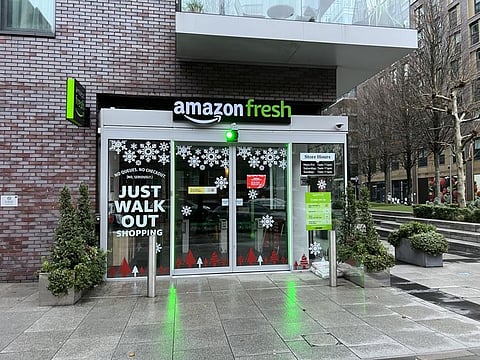How soon will UAE’s retail sector opt for widespread cashier-less stores?
Upfront costs for retailers are extensive, and they need to be ready for these concepts

Competition in retail has always been nothing short of fierce. That’s why, more than ever, customer loyalty and convenience the common denominator for brands to appeal to shoppers. But what I am going to talk about is a significant change that is creating waves in the physical retail space.
Late last year, during a trip to London, I was pleasantly surprised to see a physical Amazon Fresh store at Holborn Street. I was curious to know what an e-commerce giant would do to in the confines of a brick-and-mortar space. I couldn’t help but ask the chauffeur to turn around and drop me off at the convenience store for a peek inside. On close examination, I learned that the store is incorporated with Just Walkout technology enabling shoppers to enter, pick up whatever they want, and just go without a stopover by the cashier’s terminal.
This was most definitely an unusual experience for me. Like many, I’ve never known ‘retail’ without a checkout counter. A little more digging around on the internet led me to a reservoir of information on Amazon’s technology and its plans to expand its service across continents. Thanks to advanced artificial intelligence (AI), this type of cashier-less technology brings a new dawn for retail experiential shopping and store concepts, which are the perfect blend of the physical and virtual realms.
This experience is quite the step up from mobile wallets and QR code scans, especially for someone like me who do not particularly enjoy carrying a wallet. For a more sophisticated and hassle-free experience, this technology may change the way we shop for groceries. With this latest addition to the burgeoning field of retail automation, there are a few questions that need answers.
Are local retailers equipped to make the cashier-less model a reality? Do we have the infrastructure that makes this technology viable and what opportunities do they present?
All-in-one systems
What’s interesting about this model is its ability to marry the most advanced technologies of the last decade into one glorious system. What’s important is that all aspects must work seamlessness—thereby making integration the key. Another aspect that sticks out is the need for tightening backend processes. With cloud infrastructure, big data, and machine learning, retailers will be under pressure to ensure that stores are functioning with a robust internal system that monitors stock, bills customers accurately and clocks in buying trends, among other things.
The early movers will naturally be chain outlets. The desire to increase turnover and stay ahead will certainly be a factor that will drive them to evolve. In most cases, they already have adequate infrastructure in place and can fit out cashier-less innovations easily.
Moreover, mid-size retailers with a few hundred square feet can also pilot such technology and gauge customer readiness to go cashless. Even though teething problems may exist, the potential to optimize operations and reduce costs seem like a ticket to the promise land.
A step further in this quest to build this convenience model is the exploration of wearable technology and immersive technologies to ramp up customer experience. In the case of cashier-less store models, we must ask how much data we are willing to share as consumers. From a retailer’s perspective, the investment in adopting these systems and the response from consumers must add up. If the retail community can iron out these issues, while ensuring the consumer rights are protected, we will have more widespread use of fully cashier-less stores across the UAE.
Sign up for the Daily Briefing
Get the latest news and updates straight to your inbox




